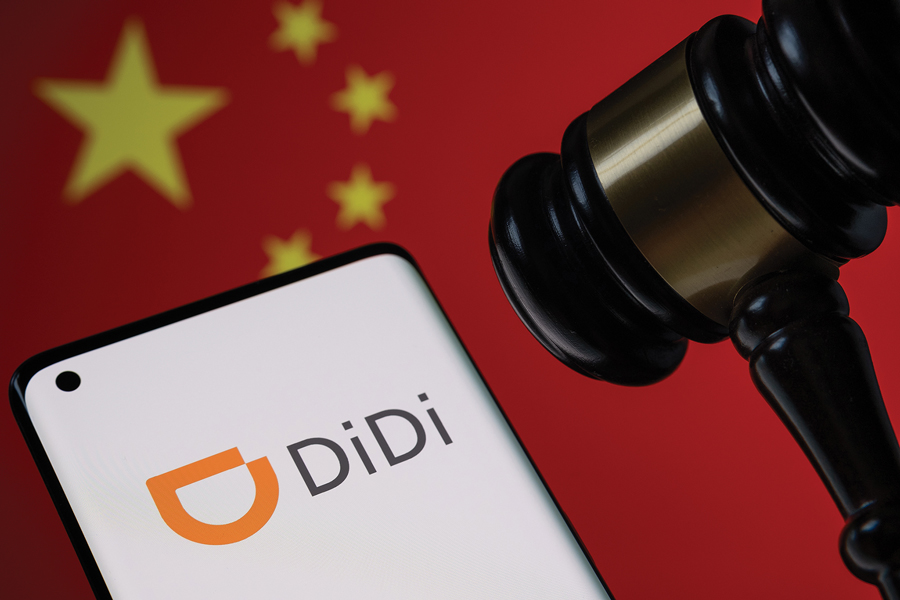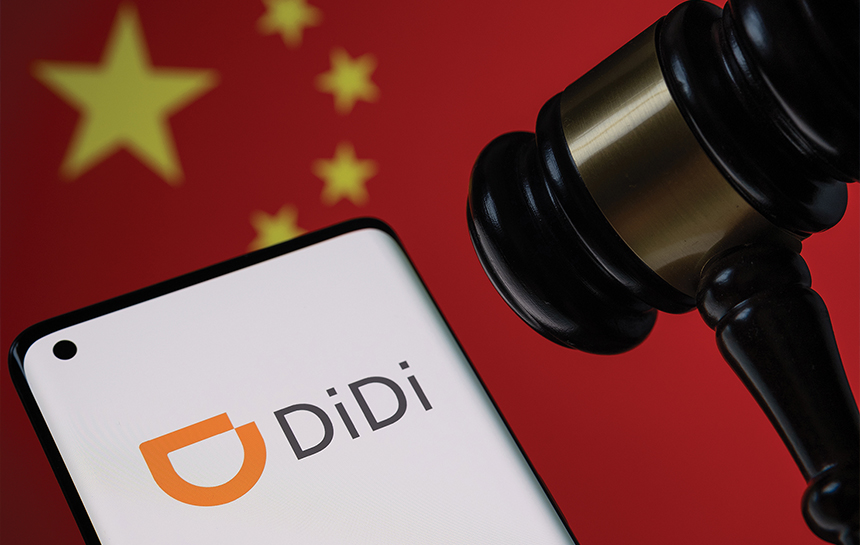Tech-tonic Shifts
By Andrew Collier, author of China’s Technology War: Why Beijing Took Down Its Tech Giants

Collier is the author of Chinaʼs Technology War: Why Beijing Took Down Its Tech Giants. He is also an Analyst at Global Source Partners, a macroeconomic and geopolitical research firm focused on emerging markets.
When Jack Ma, the billionaire founder of the Chinese e-commerce company Alibaba, gave a speech to the country’s political and financial elite at the Shanghai Bund Forum on October 24, 2020, he seemed clearly unaware that his talk would be the catalyst for a new era in China.
He attacked certain officials—many sitting in the room—for how they treated innovation in the internet industry and blamed them for failing to properly regulate the financial industry. “Today’s banks continue to have a pawnshop mentality,” said Ma, also the founder of the online financial service provider Ant Group.
He gave his speech on a Friday. Just a week later, the country’s most important financial regulators struck back. Ma was summoned to Beijing for a meeting, and the next day, in a move that shocked the world’s investors, the Shanghai Stock Exchange suspended Ant’s $34 billion listing—on the eve of the launch. The Wall Street Journal reported that Xi Jinping had personally approved the decision.
The world soon discovered that Ant was just one chapter in a much larger book. The crackdown on one company soon broadened to include other technology firms. Over the succeeding months, the regulators in Beijing imposed a series of draconian rules on Alibaba and other technology firms. Alibaba was fined ¥18.2 billion, or roughly $2.8 billion, for monopolistic practices. Didi Chuxing, the Chinese equivalent of Uber, was accused of going public before completing a review by the country’s internet watchdog, the Cybersecurity Administration of China (CAC). Didi was forced to take down more than 25 apps from online stores, and remove the “super-apps” that were the main interface for tens of millions of users, badly harming its business.
The app removal program came four days after Didi had launched a $4.4 billion initial public offering in New York, one of the biggest American stock market debuts of the past decade. Its share price immediately started plummeting and chagrined American fund managers initiated a lawsuit accusing Didi of misleading investors. The online gaming industry was the next target. Regulators summoned the top gaming companies to a joint meeting with the CAC and the Ministry of Culture and Tourism, which proceeded to impose restrictions on minors in the gaming industry.
What at first blush appeared to be a regulatory action against the platform economy was then expanded into a larger economic and cultural campaign. Shortly after the technology crackdown began, the government launched a set of new policies under a populist theme called common prosperity. While short on details, common prosperity promised to better the lives of the average citizen by improving their economic welfare.
A change of heart
The crackdown was the result of two forces, one economic and one political. On the economic side, there had been growing concern that the platform companies were detrimental to China’s growth. They were accumulating monopoly power at the expense of other companies and were seen as excessively wealthy in a country that prides itself on equality. For example, the People’s Daily said China’s goal was to “first make the ‘cake’ bigger and better through the joint efforts of the people of the whole country, and then divide the ‘cake’ well and distribute it well through reasonable institutional arrangements.” The “divide” part of the equation was viewed as being missing. In addition, it was felt in Beijing that the dominant size of the platform companies posed a risk to the stability of the financial system. The majority of transactions, loans and payments were channelled through only a handful of large companies and were lightly regulated by the government. Regulators felt it was time to step in more forcefully.
Politically, whether they had a regulatory function, all of the policies were designed to reinforce the influence of the government and the ruling Communist Party. This occurred through several transmission methods. The new policies would shrink the power of the platform economy, increase government ownership or control of several economic functions, and heighten the involvement of the party in the technology sector and the lives of the Chinese people in general. The leadership is clearly convinced that the party is central to the future existence of the Chinese state. The government viewed the size, power and large capital base of the platform companies as a potential second power center. Jack Ma’s speech was a highly visible symbol of this threat.
We can summarize below a number of key policy goals:
Aggressive “regulatory catchup” by ministries in Beijing. Central government departments whose authority had declined due to the rising power of the technology sector were now emboldened to step up their oversight.
Achieving self-sufficiency in key technology. The years of the Trump trade war, along with US technology sanctions, confirmed a long-standing conviction that China needed to develop as much of its own technology as it could. It was too dangerous to rely on the US and other nations for key components such as semiconductors. The rise of platform companies, and their use of scarce resources, was not viewed as helpful in achieving technological self-sufficiency.
Reducing financial risk. This had been a top priority for the leadership since the 2008 global financial crisis. America’s inability to control its financial system and avoid the financial crisis convinced the leadership in Beijing that they, too, needed to be on guard for a similar fate in China. The platform companies were becoming key players in online payments and lending. In the eyes of the leadership, the private sector’s level of control in China’s financial system had gone too far.
Tightening control over online data. The platform companies were beginning to assemble large batches of consumer data. This included spending patterns, total wealth and entertainment expenditure. This was a huge advantage to these firms but also had implications in terms of political control. For example, Didi Chuxing’s geospatial data could track the location of senior officials, which was not acceptable.
Rewriting the social contract with the Chinese people. No longer would wealthy entrepreneurs be allowed to conduct business that ran against Beijing’s goals and immensely profitable to themselves. The powerful educational training and gaming firms were reduced in size or eliminated, and the “gig economy” that forced workers to accept substandard wages, became more heavily regulated to avoid exploitation of cheap labor. The government also promoted a more equal distribution of income.

Strengthening the control of the party. Although the crashing prices of technology company shares came as a shock to the world, the new regulatory structures were in line with the enhanced position of the party in the Chinese system. Many of the actions taken since 2020 suggest that the rise of technology entrepreneurs and the influence of their companies was viewed as a threat. Some saw the future of the Party as being at stake, along with the Chinese state itself.
The bigger question was how far would this go. Were these new policies a return to the dark days of the Cultural Revolution when ideology ruled? Would China become completely isolated, gradually retreating from the economic integration that it has pursued for four decades? Was the tech crackdown a one-time action designed to rein in a few unruly upstart capitalists? Or was it part of a long-range plan to increase the alignment of China’s burgeoning capitalists and its political system?
Despite their impact on the technology sector, the new rules have done little more than tinker around the edges of China’s vast political and economic system. For example, although it was trumpeted as heralding a new age of equality, the common prosperity program is likely to do very little to improve China’s highly unequal distribution of income. That would require a far greater effort through reform of the state sector and China’s inefficient tax system.
There has also been a renewed focus on “hard” technology like semiconductors over “soft” technology like Meituan food services. But these policies so far have failed to deliver improvements in industries that require decades of growth.
China confronts inexorable economic challenges that make it extremely difficult to achieve such broad goals as the redistribution of income and improving social welfare. These challenges include a declining labor force, reduced rural-to-urban migration, and slowing economic growth. In addition, China has a crushing debt burden, an unstable tax system and a housing bubble. One of the main impediments is state control of so much of the economy. The continued advocacy of state-controlled firms at the expense of the private sector is inefficient and negative for GDP efficiency and growth. China will not be able to tackle these problems simply by attacking the platform economy and fomenting populist campaigns. Beijing can fiddle at the margins. but unless the government is willing to engage in significant structural reforms these problems will not be solved.
There are, however, two areas that appear to be more permanent features of the current policies. One is the state of US-China relations. There is likely to be continued financial decoupling between the two countries, including political and economic sanctions, and some limits on mutual capital raising.
The second is the role of the party in China’s political system. All of these programs—whatever their actual or perceived benefits—ultimately aimed at strengthening the current system.
The larger issue is that the challenges of running an economy that many believe has already passed its peak growth period, relying on an unprecedented increase in debt, is going to restrict Beijing’s options. The political hardening since 2020 may have been a determined effort by the leadership to steer the conversation away from slowing growth toward socially accepted goals. Ideology may have to replace what political scientists call “performance-based legitimacy.” As Pascal Lamy, former director general of the WTO, has said: “One interpretation can be that Xi Jinping is moving further into a strategy of increasing control over the economy, behaving as if there was a threat for the system and the party, even though the indications we have don’t point in the direction of there being a threat.”
Recent events, including the country’s opening up post-COVID, suggest there may be some changes afoot, including a softening stance towards the global community. But the protection of the current system from domestic challenges is likely to remain a permanent feature.
Collier is the author of Chinaʼs Technology War: Why Beijing Took Down Its Tech Giants. He is also an Analyst at Global Source Partners, a macroeconomic and geopolitical research firm focused on emerging markets.



















